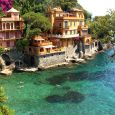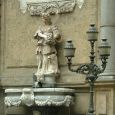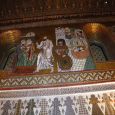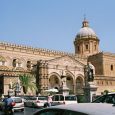Palermo
Advertisement
By Air
Palermos Borsellino Airport has connections to all major Italian cities as well as some European cities including Amsterdam, Barcelona and London among others with low cost airlines such as Ryan Air. Flying time is around 1 hour to Rome and 3 hours to London. The airport is 20 miles west of Palermo on the A29 and there are shuttle buses to the city every 30 minutes as well as a train to the city every hour.
Facilities at the airport include a self-service restaurant and a number of bars; two VIP lounges; a chapel; and a baby care room. The airport is wheelchair accessible.
By Rail
Palermo has good rail links with the rest of Sicily and the Italian mainland. There are connections to all major destinations in Sicily such as; Taormina; Siracusa; Catania and Trapani. There are seven trains a day from Rome to Sicily and the journey takes around 11 hours. From Naples itself, visitors tend to take the ferry, although there are five trains daily and the journey takes about 9 hours.
By Bus
It is possible to take a bus from Rome to Palermo, but the journey is dull and it is the least comfortable means of travelling to the city. There are daily buses in the morning and evening from Romes Tiburtina Station and the journey takes about 12 hours.
For shorter trips around the island, bus travel is a more viable option and there are connections to all the major places of interest. The bus stations in Palermo are adjacent to the train station on via Balsamo and bus travel around Sicily is inexpensive.
By Car
There are three motorways (autostrade) linking Palermo with the rest of Sicily. Those coming from mainland Italy will have to get a ferry to Messina, 145 miles from the city via highway A20. The other most popular route into the city is via the A19 from Catania. You can link to the A19 from Taormina via the A18 and from Siracusa via the state highway 114. There are two main highways that link Palermo, SS113 from the east and Trapani, and SS121 from Catania and Enna in the west. The traffic in Palermo can often be heavy and slightly chaotic, and many people chose to leave their car in a car park and visit the city itself on foot or by public transport.
Cathedral
The imposing cathedral, known officially as Santa Maria Assunta, is characterised by its blend of styles, accumulated through numerous alterations and additions over its 800-year history. It was originally built in 1185 by the Normans on the site of a mosque, with the most recent changes occurring in the 18th century. The main entrance is an impressive Gothic portal with two towers. The chapel, close to the entrance, is famous for its royal tombs and the cathedral also contains an interesting display of fine treasures.
Royal Palace and Palatine Chapel
The Royal Palace is one of the most beautiful and popular in Italy, with the famous Palatine Chapel situated on the ground floor. Roger II of Sicily commissioned construction of the palace in the 12th century and much of the kingdoms splendour is still evident. Today, the palace houses the Sicilian Regional Assembly. The Palatine Chapel is a must-see, with a magnificent blend of Byzantine, Norman and Arabic architectural styles. The chapel is perhaps most famous for the extraordinary mosaics that line its walls.
Four Corners (Quattro Canti)
The Quattro Canti, situated at the crossing of corso Vittorio Emanuele and via Maqueda, is right at the heart of Palermo, and many of Palermos sights are within walking distance of it. The four buildings that comprise the Quattro Canti and split the city into four quarters are all built on three levels, with impressive Baroque sculptures illustrating different themes - the four seasons, four patron saints of the town and four Spanish kings. The official name is Piazza Vigilena, named after the Spanish viceroy who commissioned the building of the sculptures. The buildings position means that from this spot, the sun can always be seen, from dawn to dusk. The Baroque fountains at street level make this a very pleasant setting.
Saint Francis of Assisi
The St Francis of Assisi (Basilica of San Francesco d' Assisi) is a magnificent medieval church situated in what was once the market area of the city. The church was originally constructed in the 13th century, but has been extensively renovated over the centuries. As a result of WWII bombings, the church was returned to its medieval style, but part of the original building remains. The church is typically Italian Gothic style and is notable for its stunning arches and cloister.
San Cataldo
Built immediately next to the Martorana the church of San Cataldo, with its bright red dome rising above the decorative surmounting cornice, is similar in many ways to its neighbor. It, too, was a gift from one of the top state officials of the Norman period. When William I succeeded his father in 1154 he appointed Maio of Bari to succeed George of Antioquia as Grand Admiral. As he came from Italy and not Greece, like his predecessor, Maio dedicated his church to a saint from his homeland, Bishop Cataldo of Trani, and chose the "Latin" ground plan, a triple-aisled basilica. Its longitudinal direction is emphasized by three Arabic domes above the elevated central nave. Its Arabo-Norman character is also demonstrated by the cubic exterior with three ogee windows on each side surrounded by blind arcades, and the fine ledge running around the upper edge.
Information not available





